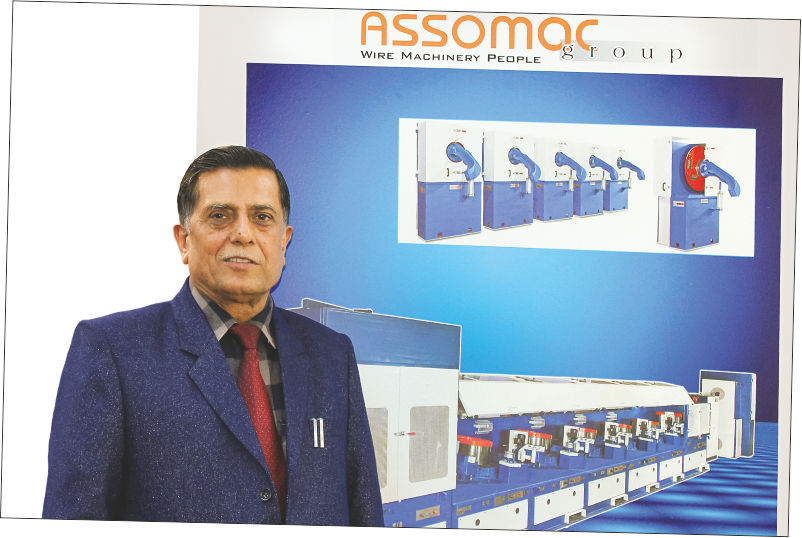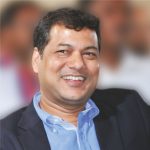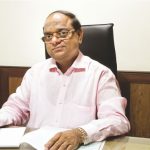Assomac, as an indigenous technology leader, has witnessed a period of over three decades of evolving wire technologies by being a key player in the process and pulling the wire industry along with.

Assomac is among few companies which have helped the Indian wire industry reach a global quality benchmark through its technologies in the last three decades. The maker of machines such as wire drawing machine, wire cutting machinery, wire making machinery, etc., is today an integrated conglomerate of engineering companies in manufacturing all types equipment and the accessories used in making alloy steel, carbon steel, mild steel, stainless steel and other non-ferrous wires.
Drawing on the experiences of witnessing and understanding the foreign technologies, the company in its initial year resolved to produce machines and equipments of equal excellence indigenously. Gradually, adopting the international best practices and indigenous engineering acumen, it started furnishing machines and tools to the Indian wire and cable industry resulting in quality produce at economical price. The company even today is known for these economical yet globally matched technologies.
On the sidelines of Wire 2016 in Dusseldorf, Wire & Cable India hosted an interaction with Mr. R. K. Tyagi, Founder & Chairman, Assomac Machines Ltd. Mr. Tyagi has a vast experience of over 38 years and is a qualified engineering professional. He has been the member of Board of Directors for the year 2005- 10 of Wire Association International Inc, USA and also the charter president of WAI-India Chapter and a ordinary member of the organization since 1992.
During the interview, Mr. Tyagi shared a brief story about how he organized an engineering company specialized in producing exactly what has been needed by the Indian wire and cable industry from time to time.
Wire & Cable India: Mr. Tyagi, you have been visiting this show for long! Tell us how you saw it evolving and with it the technological standard of the wire and cable industry.
R. K. Tyagi: I first came here in 1986 and have been visiting the show regularly ever since. It is almost 30 years now and I have observed a great transition in terms of technologies that I saw at the first visit and technologies I am witnessing now. It’s not only the difference between the technologies of then and now, it’s also about the contrast or difference between the technologies of India and Europe, which was so noticeable then. We were quite bewildered to see the huge variation in the technologies of our country and Europe, which of course was unsettling too; the European technologies were superior in all respect to that of the technologies offered in India. However, over a period of time, that contrast has dissolved and India has of late caught up with its European counterparts in terms of technological sophistication.
As far as the evolution of technological standard of the wire and cable industry is concerned, there has been an overall improvement in all quarters of technology design and development globally, including India and that has been truly reflected by this show with increasing numbers of exhibitors and visitors, with multitude of innovations sprawled here.
WCI: Share with us some glimpses of the early career as well as the background of the industry then.
RKT: To brief you about the background of the industry then, I must admit that technology and technological know-how both were sort of nascent or incipient, so to speak. I started my engineering career way back in 1968 with 18 months training in a steel rolling mill in Ghaziabad, one of the largest mills in North India then. As a person entrusted with the job of maintenance of the rolling mill, I learned a lot as it was a pure engineering work revolving around machines. I spotted various impediments and bottlenecks during the operation of mills resulting in low productivity, which I later tried to address through my own design and development.
My inner sense realized the scope of wire technology development in India which was much behind the rest of the world; and even the mild steel/high carbon wire was being imported from Japan and Germany up to post 1960s. We planned to start a small wire machine making factory with no finance and no business experience.
In May 1970, a machine designing and manufacturing facility was started in the small annexes of our residential compound and within one year 800 sq. yd. factory was built in Ghaziabad Industrial Area with non-stop growth and machine development in a joint partnership within the family up to 1985.
I designed many components of the mill for technological improvement (in terms of quality and quantity) at that time and there came a demand for a wire drawing machine. In fact, Russians left India after commissioning Bhilai plant, the fastest rolling mill at the time. They rolled 10 mm wire rod and there was no good machine in India to draw a 10 mm wire rod. Our company also was intending to set up a wire drawing machine for the specification and was contemplating to import it from Germany; it was to take over six months only to get that machine to India. We then exhibited willingness to design and develop the machine here in India only as there was nothing we lacked as resource to undertake such a task – we had workshop, foundry, fabrication facility, etc., combined with our local engineering talent. At the cost of sounding a bit boastful, we designed and developed the machine within two and half month in post 1968. The machine was working even 20 years later when I last saw it. I left the company in mid-1970s.
WCI: What happened after that? Did you join other company, or started at your own?
RKT: There was a split in partnership and a small section of M.S. Wire Drawing was given to me. Within two months, the production was up to 400 MT per month in place of 200 MT capacities without any expansion and financial input.
In the meantime, the wire industry people approached me with pressure to start the manufacturing of wire drawing plants once again for which I was deprived at the time of separation. I moved ahead to pursue the ambition of designing and fabricating machines for the wire and cable Industry. Also, in mean time (until Assomac was established), I was doing too much designing and travelling to explore more of upcoming technological trends. It was at this juncture only when I got the opportunity to visit Wire & Tube show in April 1986 in Dusseldorf, Germany.
WCI: What did keep you prodding to go extra mile when you yourself have admitted that the technological know-how back then was almost dismal in comparison with Europe, almost disheartening? What was your take away from the Wire Show in 1986?
RKT: As I said, we were amazed to see the range of technology displayed here meant only for the wire and cable industry. Candidly speaking, we did not achieve much practically at our first visit here and the only take away was the resolve to do better in terms of our indigenous technology. Not only was the technology difficult to understand for majority of the Indian visitors, but also it was unaffordable economically for the Indian companies. These things had a deep impact on our minds and we returned only to fire all our boosters to design and develop at our own.
We knew that India had no dearth of engineering talents and that we could do better by selecting better equipments, better material, and the best of precision engineering. The motive was primarily to serve the Indian wire industry and matching the level of the West at the same time. Gradually, our engineering systems improved and we began succeeding in crafting machines according to our domestic requirements.
The growth trajectory was steep and the Indian wire industry embarked upon a fast growth story as India had comparatively nothing in the industry – only few low carbon and high carbon wire manufacturing, only in the companies like Special Steel, Bombay (which is Tata Steel now). At that time, major plants were installed in collaboration with Germany, Japan, UK, etc. Today, the picture has changed completely, and almost absolutely, with Indian companies and buyers to have grown up and developed a capability to buy the costliest of technologies.
WCI: Where do you find Assomac placed today as a technology and solution provider amid this swift growth scenario?
RKT: As I said, after the separation from the first company I started in partnership, I was engaged in a wire drawing plant for making mild steel wires only. I just focused on that for two months and production was almost doubled. In mean time, people started persuading me to restart working on the machine building. And, as I saw mounting pressure and increasing demand for such technologies, I went ahead to establish Assomac Machines Ltd in 1988 and there was no looking back thereafter.
We started from 1 acre plant, only to convert presently to over 10 acre. There are over 400 people working solely for the wire and cable industry. We are constantly engaged in serious R&D in terms of designing and developing machines and systems required by the industry. Assomac’s design center is at par with the best in the world. The company is laced today with ample resources and facilities such as workshops, foundries, cleaning, blasting, fabrication, in-house assembly, etc. We are one of the most self-equipped work centers with nothing to look out for.
Assomac commands 90-95 percent of projects in India and India today is the topmost stainless steel wire exporter to the world. There are around 35-40 Indian companies displaying their products here; 60-70 percent of those are our customers. You name any metal or alloy today, Assomac has a solution for that. Be it high carbon segment, wire rope segment, stapler wire, nib wire, etc., we have customers from all. The nib wire, which is an alloy of copper, lead, and zinc, is made in India and exported to several countries – most of the nib wire manufacturers are our customers. So, you may guess the level Assomac is operating on today.
WCI: What is your philosophy, or vision, as a company?
RKT: We are here to support the Indian wire industry, not only to make money. Assomac only charges for the machineries and components, all the technical guidance and exchange are absolutely free. As a company, we have shouldered many responsibilities which are vital for the country and have developed many systems for such premier organizations as ISRO, DRDO, DMRL, etc. under the GOI. These systems are not common and there is no second customer for such systems.
To be a part of nation-building is our foremost concern. Unlike our competitors, we always think of making and developing machines as per our domestic need as not everything can come from outside. We help our customers at all levels from the selection of machines to finally training their people about how to look after it. That is how Assomac works!





